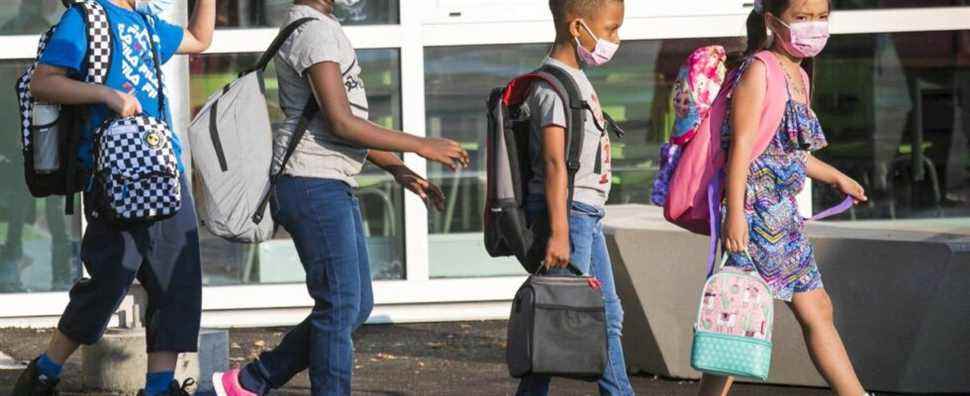The rapid COVID-19 screening tests being rolled out in Quebec schools could at the very least prevent children with worrying symptoms from being sent home unnecessarily, shows a new study Quebecois.
The Ministry of Health and Social Services and the Ministry of Education recently announced that these tests would be implemented in schools in ten regions of the province, including Montreal, Laval and Montérégie.
Dr Caroline Quach-Thanh, CHU Sainte-Justine, and her colleagues studied the optimal use of rapid tests to contain outbreaks and evaluated their effectiveness in schools.
They conclude that polymerase chain reaction testing (PCR testing) remains the most sensitive technique in symptomatic individuals, but rapid testing has a role to play when children are showing symptoms.
“If you arrive in the morning and you realize that the child is coughing a little and maybe he has a sore throat, if the test is negative, the child can stay in school,” said the doctor. Quach. Obviously, if it continues, we would have to go for a PCR (test) as usual, but we are able to allow school attendance around this test. “
Rapid tests may miss a few SARS-CoV-2 infections compared to PCR tests, but the risk is lower in patients with symptoms. These rapid tests are also more effective when the viral load is high, which is when the contagion is greatest.
Dr. Quach therefore comes to the conclusion that rapid tests should be reserved primarily for symptomatic people.
And even if they could allow some children to stay in school or child care, she said, it will still require judgment, since the criteria that existed before COVID to send a young person home. remain valid.
“If the child has a fever, is not well, is not able to keep up with activities, he should be sent home again,” she said. If he has a fever and the test is negative, he is amorphous, he is not able to follow what is going on in class, there may be influenza, there may be -be other viruses that we do not want to transmit either. “
The results of this study were obtained thanks to the participation of more than 2,000 high school students and nearly 300 school staff recruited from two high schools in Montreal and followed between the months of January and June 2021.
The researchers found a higher proportion of asymptomatic cases in these participating schools, which would mean that more cases were missed in other schools in the province.
In addition, of the infections for which the source was known, 72.5% resulted from family transmission and 25% from school transmission.
